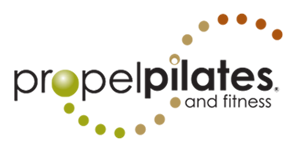Can Pilates help with stroke recovery?
A stroke happens when something blocks the blood supply to part of your brain or when a blood vessel in your brain bursts, causing a lack of oxygen to the brain cells. The part or parts of the brain that are affected become damaged or die which can cause long-term disability, lasting brain damage, or even death in some cases.
The negative impacts of a stroke depend on a number of factors, including the area of the brain that is affected and how quickly treatment is administered. Generally, one side of the body is affected by the stroke, and some of the more common deficits seen in patients include:
- Speech impairment
- Changes in muscle tone
- Impaired coordination and balance
- Numbness or strange sensations
- Paralysis and/or weakness
- Impaired cognitive function
Rehabilitation following a stroke usually involves physical, occupational, and speech therapies depending upon the type of and severity of damage experienced by the brain However, many stroke survivors have also incorporated alternative treatments into their rehab to help rediscover their strength and body awareness and to improve their quality of life.
In a recent study published in the Journal of Physical Therapy Science, researchers studied the influence of Pilates training on the quality of life in chronic stroke patients. Pilates was found to be highly effective for improving and/or recovering physical functions such as balance, flexibility, muscle, and cardiopulmonary functions.
The study also showed that the use of Pilates supportive equipment such as the Reformer, the Wunda Chair, and Cadillac provide an opportunity for stroke patients to participate in an exercise program that previously had not been an option.
Being able to use spring-loaded equipment helps with certain movement patterns while providing resistance for weakened muscles. Feet-in-strap exercises help patients to focus on more symmetrical movement to help the affected limb “get back into sync” with its partner.
It’s all about reconnecting your mind and body
According to Joseph Pilates, “Pilates is a complete coordination of body, mind, and spirit.” Pilates is a form of exercise that teaches you how the mind and body are connected to help attain better body awareness. The six principles of Pilates — centering, concentration, flow, breathing, control, and precision — force use to use your brain when mastering an exercise.
When a person suffers a stroke, they have a “disconnect” of their mind from their body. A patient may “think” about making a movement with an affected limb, but can’t make the movement happen.
Pilates exercise helps to re-establish that connection because it addresses all the facets of exercise requiring not only physical control, but also mental control based on the six Pilates principles. Patients in the study showed improvements in core strength, flexibility, posture, muscle strength, and balance.
In addition, patients felt happier and experienced a sense of satisfaction and accomplishment as their physical abilities began to improve.
Make Pilates part of your rehab program
If you’ve suffered from a stroke, Pilates may be a great alternative to help with long-term physical deficits. Propel Pilates and Fitness, located in Rancho Bernardo, is the premier studio for Pilates in North County San Diego.
We offer precise, focused, and safe workouts to help you achieve your wellness goals. Visit our studio to learn more about how Pilates can improve your quality of life.
